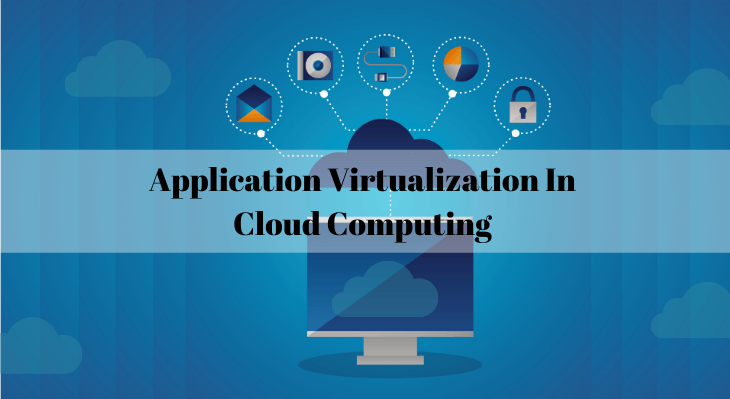Modern operating systems were in much need of virtualization since they worked isolated from each other and thus were inefficient in handling multiple operating systems as well as applications on a single system.
Virtualization improved the overall performance of handling such issues as well as balancing the resources.
- How Application Virtualization Works
- Role of Application Virtualization in SAAS (A Cloud Computing Model)
- Approaches to Virtualize Application in SAAS
- Top application virtualization tools
How application virtualization basically works is that it uses the remote display control to transmit the entire application in the form of pixels from the host server to the desktop of different users.
These applications are then accessed by the user on their systems as if they were a local installation.
The main advantage of application virtualization is that it allows applications to run on client’s computers as if they are locally installed. There are two types of application service providers
- Those who provide the use of an application and the related infrastructure.
- Those who provide infrastructure as well as management support
The use of these models is used mostly for web-based applications that are designed to be run on a web server.
Now, since SAAS application deployment has revolutionized the industry. Wherein the software was earlier used to be installed directly, now this software can be delivered virtually as well.
Meant by standalone terms is that the device is able to perform independently without any support from hardware or software.
Most commonly the storage of certain application is done on the same type of hardware’s which are able to perform desired functions independently.
The concept behind the streaming is to make an application work on the central server separating it from the local system. The main working happens with the help of blocks.
Blocks are just codes in any software programming. In an application, only the blocks which are needed to execute the working are only considered. These are copied to the local disks or caches.
Centrally controlled access as the name suggests the distribution of applications in this approach happens centrally.
Many times local support for installation is needed which is commonly known as an agent that is locally present in the system.
This type of virtualization tool is mostly beneficial to the business class people or consumers who wish to access the data from any device.
Parallel remote application software is available for both the platforms desktop as well as virtual
The main advantage of this software is that it comes with continuous availability.
It secures corporates from any type of threat by using SSL encryptions and other security features like permission policies and two-factor authentication methods.
It’s an application virtualization tool that is included in the VMware horizon suite. This app virtualization tool is agent-free and nothing is installed in the user’s machine.
This application tool packages applications into different executable formats such as as.EXE format and.MSI.
VMware ThinApp factory is tasked to centralize the ThinApp administration process and also it automates the virtualization in the cases of window applications.
It allows the applications to be deployed in real-time from any virtual application server. It eliminates the traditional approach that was used for the local installation of applications.
One of the features of App-V is its central installation of applications as well as the management of the deployed ones too.
Another feature of App-V is that it also gives a tracking interface feature which helps in evaluating the usage of virtualized applications.
Ceedo has come up with an enhancement of application virtualization which is workspace virtualization. It has the ability to virtualize the complete workspace and includes some of the features like application setting and user data.
The benefit of this enhancement is that the applications get the immunity of interacting with one another and also launching each other.
It also assists users to store their data and application setting whenever they opt for other operating systems.
The main feature of this application virtualization tool is that it is remotely accessible.
It happens to be the answer to the desktop complications that are centrally managed as well as for the application also that work on the platforms like Microsoft or Linux systems.
It’s a desktop and application virtualization software that provides the users with benefits of running applications remotely without installing them on the devices or computers.
Of many other features of this tool, some important features are performance monitoring, business intelligence, and two-factor authentication.
This application virtualization tool is available for Windows 7. This application is a simple solution for the ones who want to use application virtualization in their environment.
As of now, this virtualization tool does not offer any streaming capabilities. Most of the applications are in need of costly infrastructure but Evalaze does not need any such infrastructures.
It’s an application packaging and deployment solution primarily consisting of three components
- MSI Generator
- MSI Editor
- Docu Generator
MSI Generator is capable of holding legacy setups with the application setup of corporate standards. Various formats, like, MSI, APPX, and ThinApp are generated by it.
MSI Editor helps in providing tools for windows installer packages.
Docu Generator allows creating screenshot based instructions for packages.
These types of application virtualization tools work on the concept of container approach. This approach allows the working of virtualization within the operating system.
This approach usually isolates those parts of the operating system on which the application has to work. It benefits the IT team the most who now only have to deliver only the application
You may also like to read:
6 Best VDI Solution Providers for Businesses to Invest In
What is Virtual Desktop Infrastructure? (VDI)
What is the Importance of Data Management in different Organizations?

